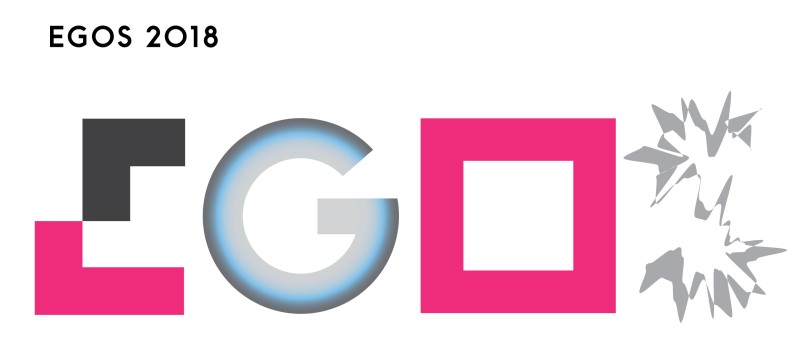Sub-theme 60: Unexpected Change in Contemporary Health Care Organizations and Systems
Call for Papers
Health care organizations are prototypical examples of complex systems, because of the number of interdependencies among
professionals, organizational units and disciplines that healthcare delivery requires. At the same time, healthcare organizations
are important “nodes” within the healthcare systems and society at large, where they play a delicate role in ensuring health
and well-being to the larger possible number of individuals.
In such complex internal and external environments,
heavily influenced by societal, ethical and political pressures, both macro and micro level changes may determine large and
unexpected outcomes. Organizational change is implemented around the world to improve the way healthcare organizations deal
with patients, employees, payers and societal expectations at large. Changes are often planned; however, we can also observe
a number of unexpected and sudden changes, which have the potential to deeply affect how healthcare organizations and systems
functioning. Some of these changes are endogenous and are related to the adaptation of internal resources, such as hiring
new personnel due to reorganization, or the adoption of new technologies to pursue a better fit with environmental demands
(e.g. Lukas et al., 2007). Even in these cases, planned changes can result into a number of unpredicted consequences in organizations.
For example, the adoption of new technologies may result in the formation of new professional roles which in turn alter the
delicate balance of the internal climate.
Other important triggers of changes are exogenous, such as natural
disasters, financial pressures or institutional shocks, for example policy reforms and changes of governments (van der Vegt
et al., 2015). To illustrate, the recent election of Donald Trump as President in the US raises a number of questions about
its consequences for the previously introduced Affordable Care Act, also known as Obamacare. National policies, such as the
national insurance act in the Netherlands, but also international, such as cross-border migration, might also introduce sudden
institutional shocks, able to deeply alter the competitive and institutional environment in which healthcare organizations
operate.
Endogenous as well as exogenous surprises are relevant for complex systems like health care organizations,
that are called to balance a wide range of different stakeholders’ interests and aspirations, which are often not fully aligned
and are rapidly evolving (Scott et al., 2000). Sudden changes often imply the redefinition of norms and social values, as
well as the requirements imposed by internal stakeholders – for example, employees and professional groups – and by external
forces, determined for example by the payers (government, insurance companies), patient associations, suppliers of pharmaceuticals
and medical technologies (Roehrich et al., 2014). Facing such a broad range of threats and hazards requires a better understanding
of how organizations enact internal strategies, adopt new models and rely on their social capital in order to gain access
to a new or modified stock of external resources (e.g. Butts et al., 2012; Kahn et al., 2013).
We invite
papers presenting a wide range of theoretical and methodological approaches, which may address, without being limited to,
the following research questions:
How do health organizations identify, deal with and react to (un)planned endogenous changes?
How do healthcare organizations manage unexpected and sudden exogenous changes such as natural (e.g. earthquakes, tsunamis, hurricanes) as well as man-made disasters (e.g. terrorism, cyberattacks)?
How do healthcare organizations manage unexpected exogenous changes deriving from institutional shocks? What are the internal dynamics as well as external strategies emerging to face suddenly changed expectations and requirements?
Which organizational dimensions are mostly affected by unexpected change? What forms, models and arrangements are increasingly adopted to improve the capacity of organizations to deal with unanticipated events and change?
How do organizations evolve and adapt their routines to react as well as to anticipate unplanned change?
What is the role of coordination, integration and other network forms of organization in facilitating or hindering change and adaptation?
How does interorganizational collaboration with organizations belonging to other industries (e.g., pharmaceutical or public sector companies) allow facing external shocks and unexpected events?
What is the role of health technologies, and how are they adopted and implemented in organizations to support and contribute to organizational adaptation to sudden changes?
Which human resource practices and processes (e.g. selection, compensation, motivation, and leadership) can be adopted to reduce conflicts, improve the organizational climate, and increase its resilience during and after unexpected changes?
Which new managerial and professional roles emerge and are adopted in health organizations to face sudden changes? What is the role of patients and of patient-centered models during sudden changes?
What models and mechanisms for performance appraisal can be adopted to assess health care organizations in the context of change?
What is the role of organizational culture in favouring or hindering organizational change deriving from unplanned events in healthcare organization? How – and with which difficulties – are new forms being adopted and implemented in health systems around the world?
References
- Butts, C.T., Acton, R.M., & Marcum, C. (2012): “Interorganizational collaboration in the Hurricane Katrina response.” Journal of Social Structure, 13 (1), 1–36.
- Kahn, W.A., Barton, M.A., & Fellows, S. (2013): “Organizational crises and the disturbance of relational systems.” Academy of Management Review, 38 (3), 377–396.
- Lukas, C.V., Holmes, S.K., Cohen, A.B., Restuccia, J., Cramer, I.E., Shwartz, M., & Charns, M.P. (2007): “Transformational change in health care systems: An organizational model.” Health Care Management Review, 32 (4), 309–320.
- Roehrich, J., Lewis, M., & George, G. (2014): “Are public-private partnerships a healthy option? A systematic review.” Social Science & Medicine, 113, 110–119.
- Scott, W.R., Ruef, M., Mendel, P., & Caronna, C. (2000): Institutional Change and Healthcare Organizations: From Professional Dominance to Managed Care. Chicago: University of Chicago Press.
- van der Vegt, G.S., Essens, P., Wahlström, M., & George, G. (2015): “Managing Risk and Resilience.” Academy of Management Journal, 58 (4), 971–980.


